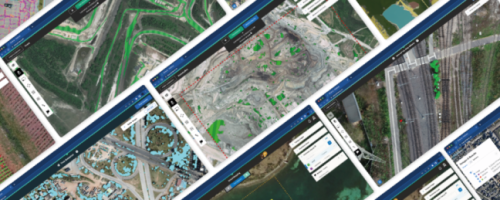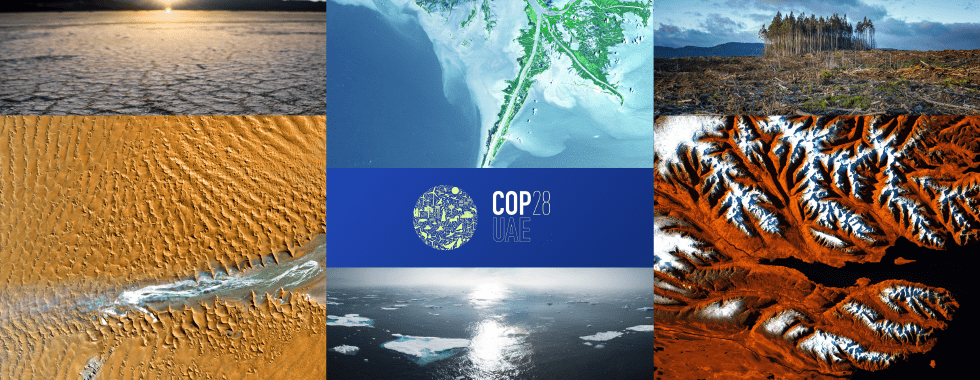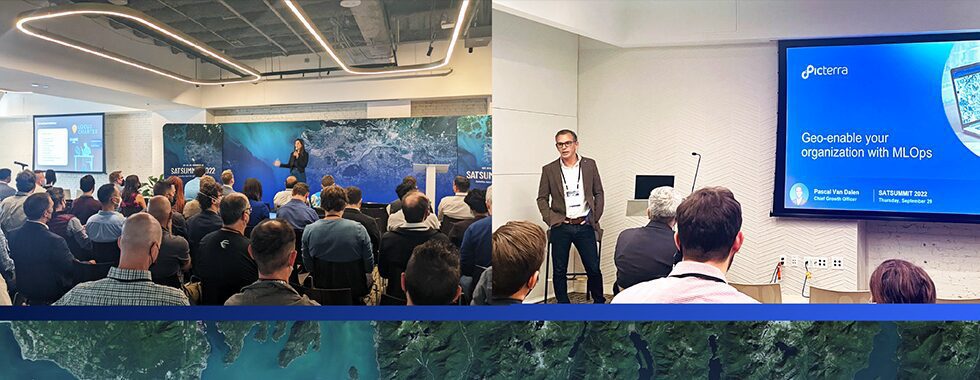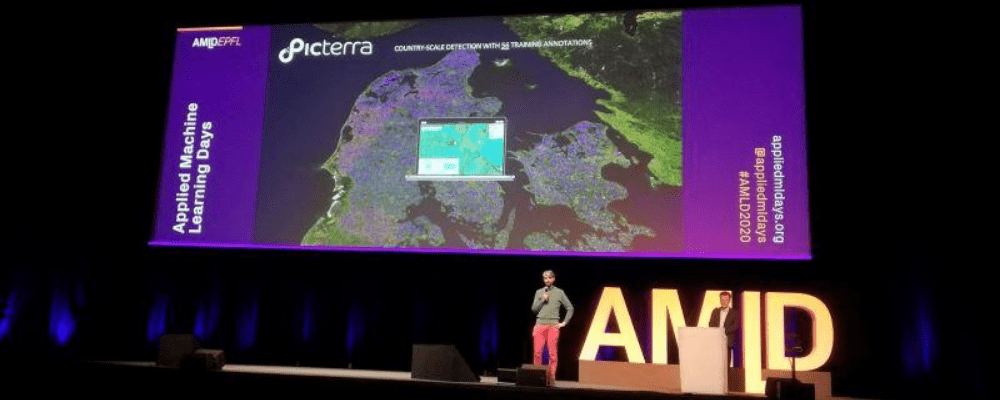Maxar, a leading space technology and intelligence company, recently hosted their annual event ‘ENGAGE’. The two-day event brings together groups across the Earth intelligence and space infrastructure user community: defense, civil government, telecommunications, automotive, space agencies, global development, entrepreneurs, think tanks, and many more.
ENGAGE provides a ‘unique platform to examine space-enabled use cases from multiple perspectives, to find meaningful partnerships and to learn about the disruptive innovation that is transforming how we all access space capabilities and space-enabled solutions’.
This year the event was hosted in Cascais, Portugal with one of our Account Executives, Joy Bhansingh, in attendance. We caught up with Joy on his return for his thoughts and insights on the event.
What attracted Picterra to ENGAGE?
Maxar is well known as a leading provider of Earth Observation (EO) imagery, partnering with innovative businesses and more than 50 governments to monitor global change. There’s a high chance that you’ve already seen their imagery on the nightly news or online publications.
With access to more Earth Observation images than ever before, companies across industries are realizing the strategic importance of this data, even ones that traditionally never saw a use case for satellite, drone, and aerial imagery.
With over 400 attendees, from 30 countries we were excited at the opportunity to be able to engage with domain experts who provide geospatial services and advisory to their clients and demonstrate the power of embedding our powerful machine learning capabilities into their applications.
From a personal perspective it was also lovely to visit the Portuguese Riviera and be able to network with new and existing clients!

What were the main themes of the event?
The title of the event was ‘Unleashing the Disruptive Value of Space’ and many of the 55 speakers at the event were presenting on the disruptive innovation that is transforming how we all access space capabilities and space-enabled solutions. Key areas of focus included:
- Safety, security and defense
- National space programs
- Mobility
- Sustainability and humanitarian
- Energy
- Financial technology
- Technology and location-based services
A main theme that stuck out for me was how companies are now using geospatial data in a much broader way and I had some really interesting discussions focused on environmental use cases, something as a company we’re very passionate about.
What were some of your event highlights?
One talk which really interested me was that given by Steve Yeager, Product Manager at Maxar. Steve talked about Maxar’s analysis-ready data (ARD) which consists of preprocessed time-series stacks of imagery that are aligned and produced at a set standard. This means that imagery can immediately be used in machine learning (ML) model development.
At Picterra we’re all about freeing up time for data science teams by automating tasks so they can concentrate on more value-added work. One feature of ARD is the vibrant color balancing, which better highlights features of interest in the imagery that may otherwise be hard to distinguish. This can really help during detector training when objects can be difficult to detect in certain image conditions, including low sun elevation angles, high off-nadir angles and extensive cloud cover.
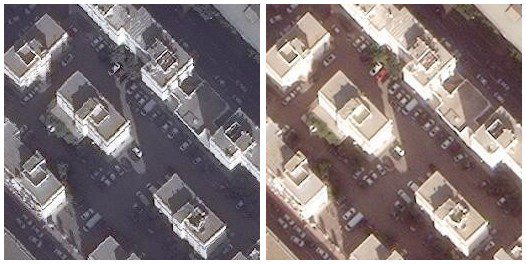
The WorldView-3 image on the left shows Algiers, Algeria, without ARD processing. The image on the right is the same image ordered through the ARD Order API.
I was sad not to have bumped into #GrantsHat whilst at the event, pictured below with Maxar’s WorldView-3 Earth Observation satellite. Grant’s use case of whale detection reminds me of a post my colleague Roger Fong authored on detecting seal and sea-lion populations!
#GrantsHat is in Portugal at the @Maxar Engage conference. Here we are standing next to the worldview 3 satellite that we use for detecting #whales from space. #SPACEWHALE. @HiDefSurvey @CHoeschle pic.twitter.com/oVxHIZNGgg
— Dr. Grant Humphries (he/him) 🇦🇶 🏳️🌈 (@GrantHumphries) June 14, 2022
What do you think would be a key trend in the satellite analytics business in the coming years?
The key trend will be that all organizations – regardless of sector – will consider EO imagery a critical data source. It will be as ubiquitous as ERP or CRM data is to all industries today. We already experienced a similar shift with the advent of dashboarding tools like Tableau and Qlik in the late 2000s.
When data moves into the hands of business managers with the ability to act on it, amazing things happen. Similarly, we aim to make it easy for anyone – regardless of technical background – to use geospatial data to have a positive impact on the planet.
–
Thanks Joy! We look forward to attending next year’s edition of ENGAGE.

